The penitent Magdalen: Notes toward a Postsecular Age
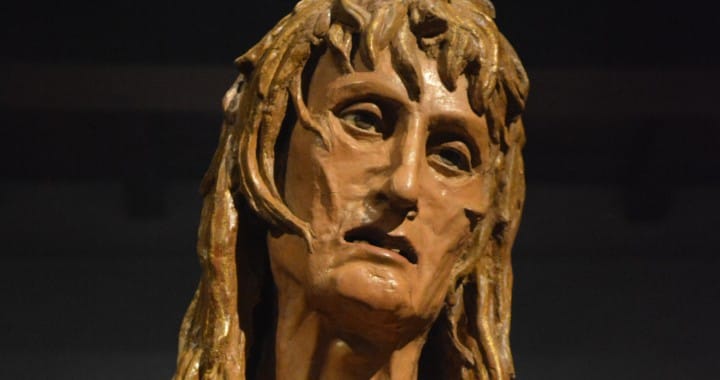
About 30 years ago when I was pursuing academic work in Religious Studies, I became fascinated by the figure of the penitent Magdalen. In particular, Donatello’s sculpture of that name (c. 1440), as well as a painting titled “The Repentent Magdalene” (c. 1640) by George de la Tour.
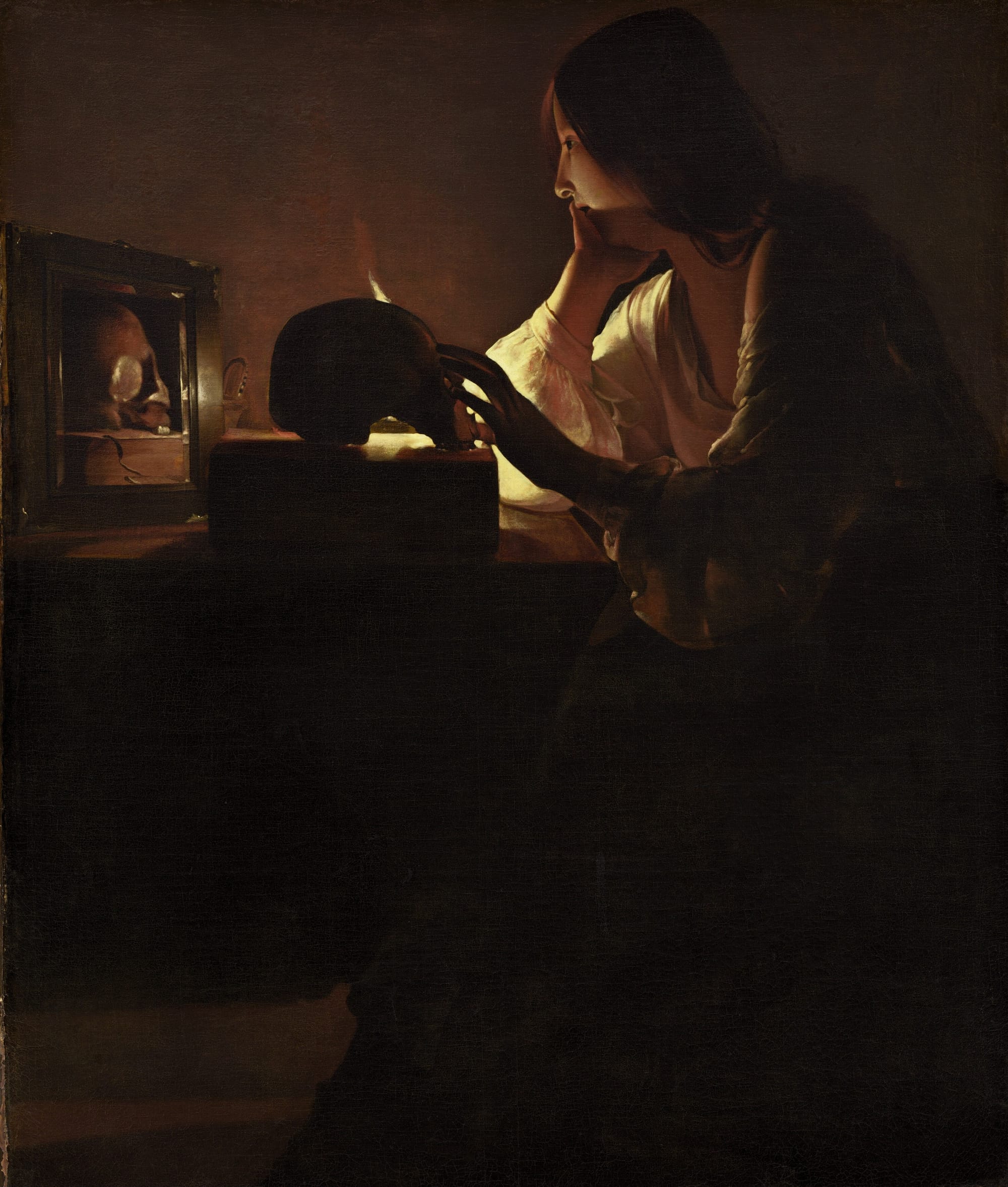
With his use of the candle, mirror, skull, and book, de la Tour takes a genre of portraiture typically associated with male intellectual figures—the philosophical contemplation of mortality—and applies it to a woman.
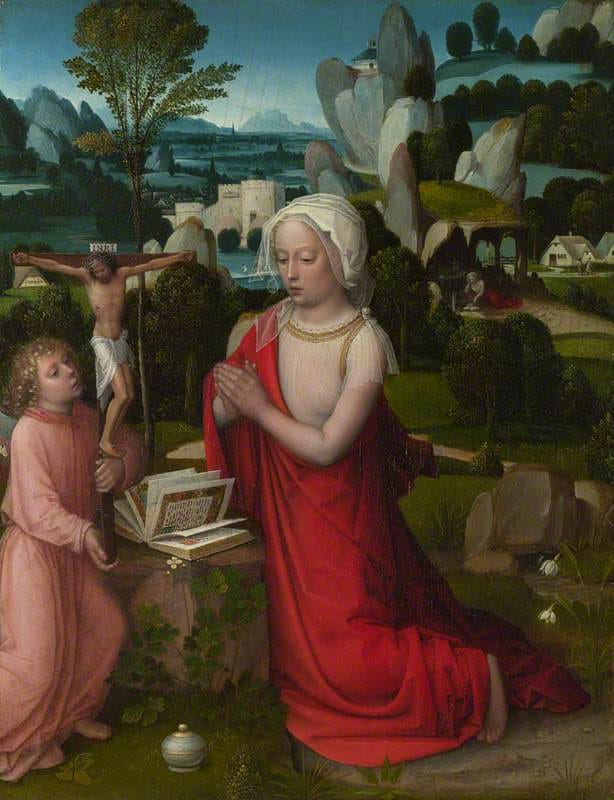
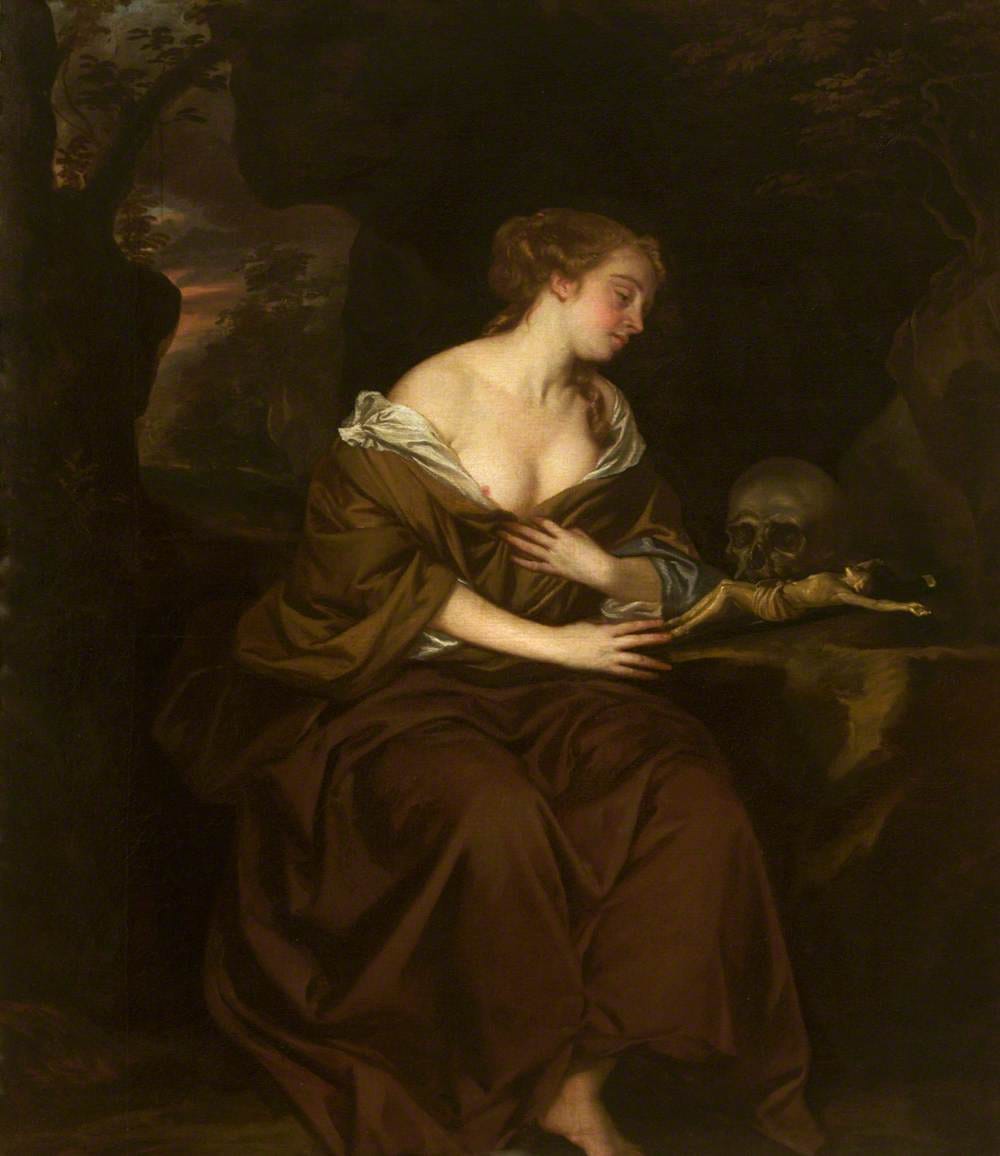
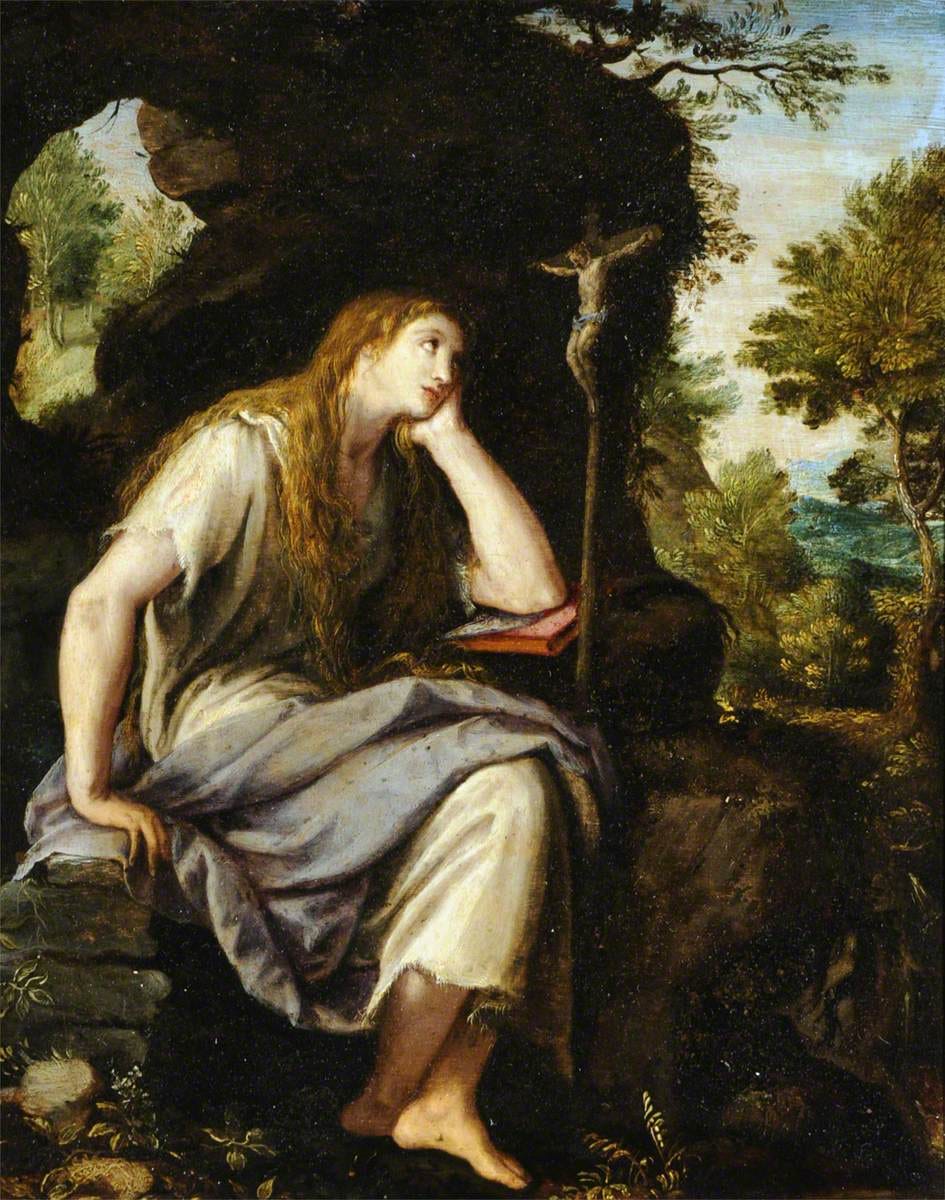
From top left: Albert Cornelis, The Magdalene in a Landscape, c. 1500 (National Gallery, London); Peter Lely, the Penitent Magdalene (National Trust), Alessandro Allori, The Penitent Magdalene in the Wilderness (National Trust).
While it was not uncommon to represent Mary Magdalene—one of Jesus’s circle of close companions and the first to encounter the risen Christ in a garden—as a reader and thinker, de la Tour very effectively captures the mood of reflective thought in this portrait.
Donatello’s wood sculpture, however, captures something else entirely. Carved from a single poplar tree, it draws inspiration from the legends concerning the much older Magdalene, said to have retreated to the wilderness to live the contemplative life long after the events surrounding the Crucifixion.
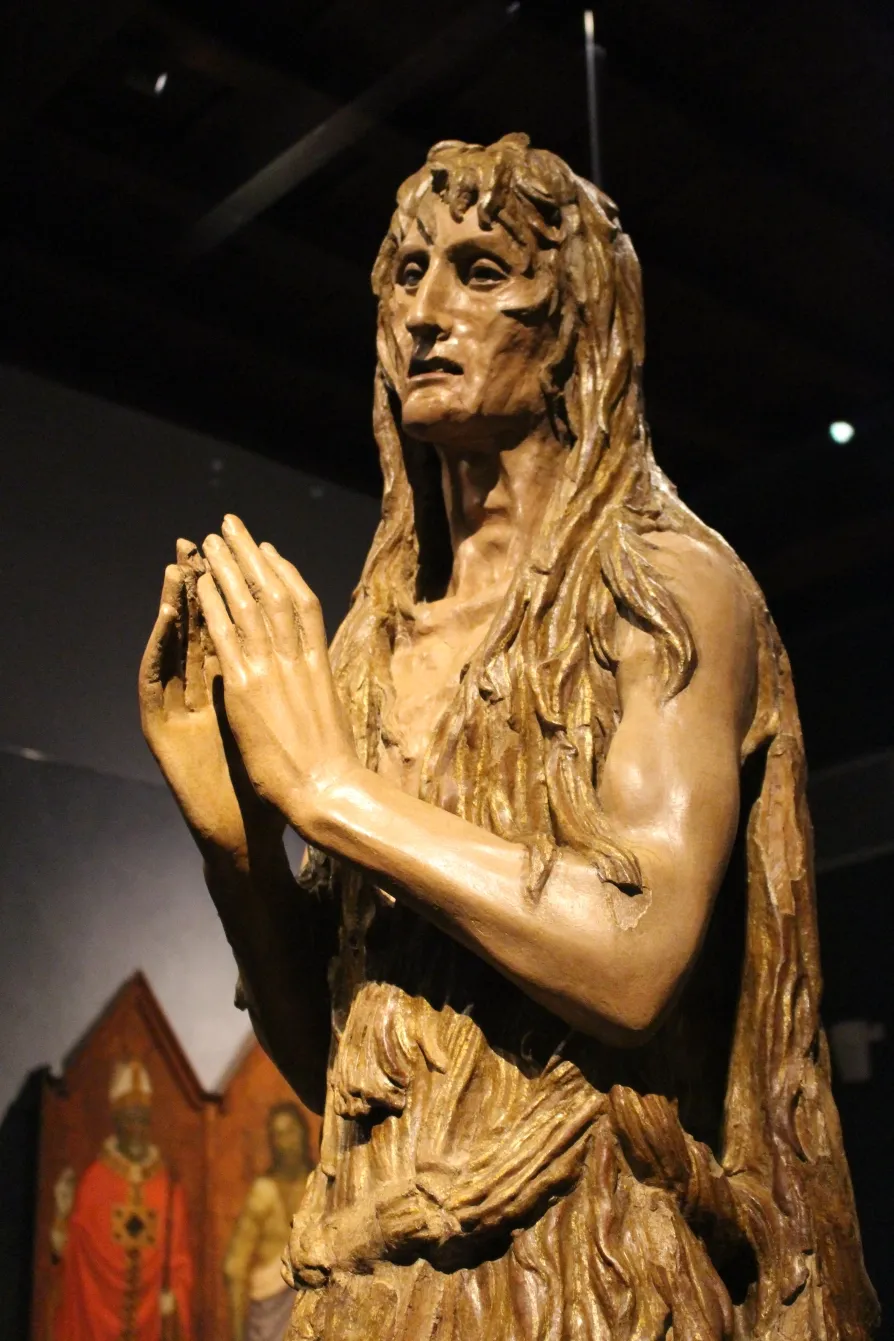
This is the face of hard won wisdom. Clad only in hair that comes to mid-thigh, Donatello’s haggard but at the same time surprisingly muscular Magdalene (seriously: look at those arms!!) shows all the signs of decades living on the land.
On leaving the world
At the time I didn’t really understand why I found these figures so compelling. It did always seem to me that Donatello’s Magdalene had figured out a thing or two that de la Tour’s younger Magdalene was just beginning to formulate as a question.
Hermits and other kinds of religious recluses exist in the popular imagination as a kind of shorthand for enlightenment, but the real power of proximity to the natural world needs to be experienced to be really understood.
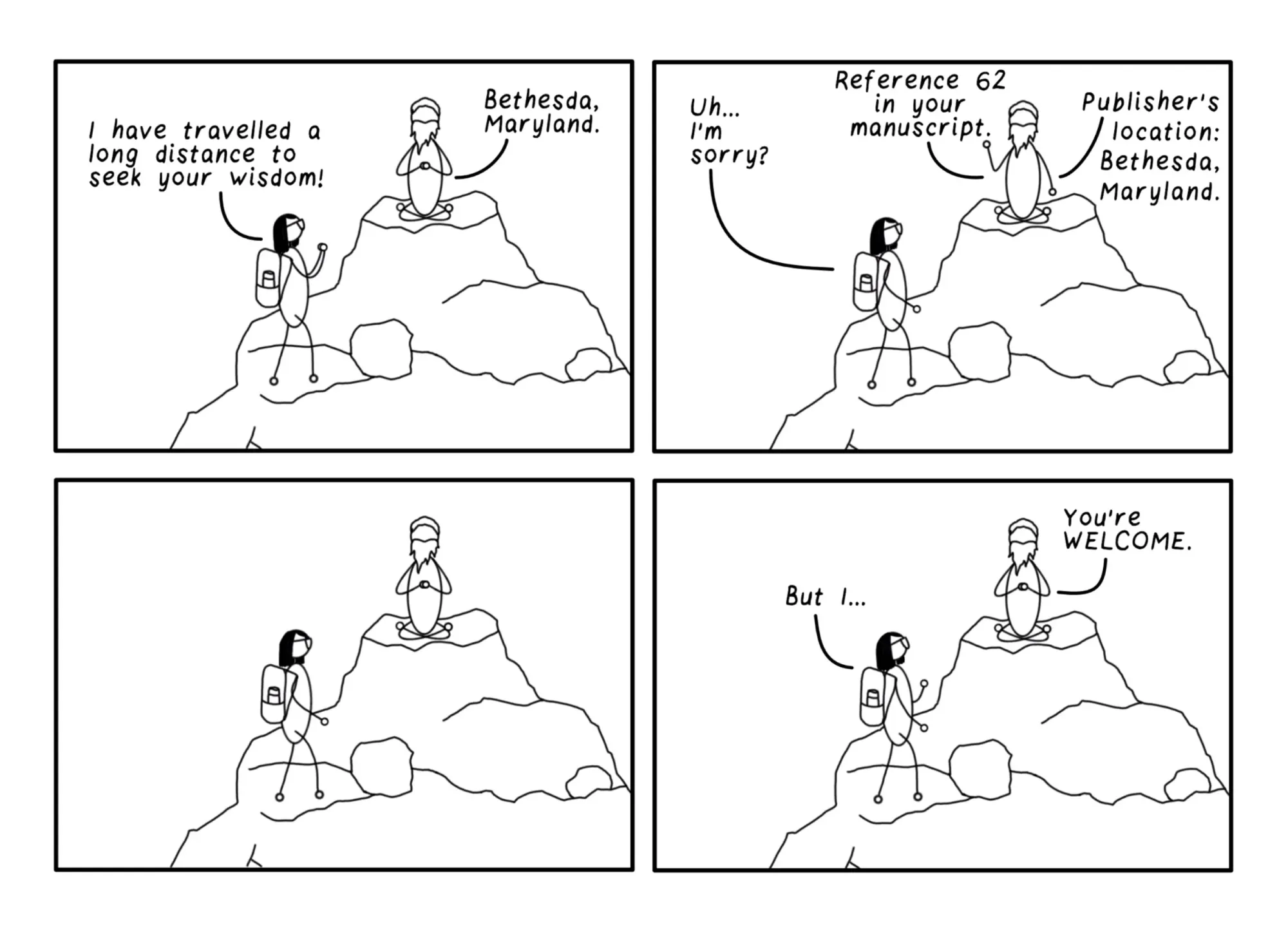
Four years ago—which seems like an eternity, another lifetime ago, because it was—two things happened that prompted my own withdrawal from the wider human world.
My boundless ambition and relative inexperience as a new farmer meant I became so completely consumed by the project of an experimental agroecological farm that I had nothing left for anything else. Including staying in touch with most of my social circle, really.
Initially, it wasn’t a deliberate decision to withdraw. It’s amazing how fast each day goes by when everything around you is relentlessly, exuberantly engaged in being born, living, and dying all around you.
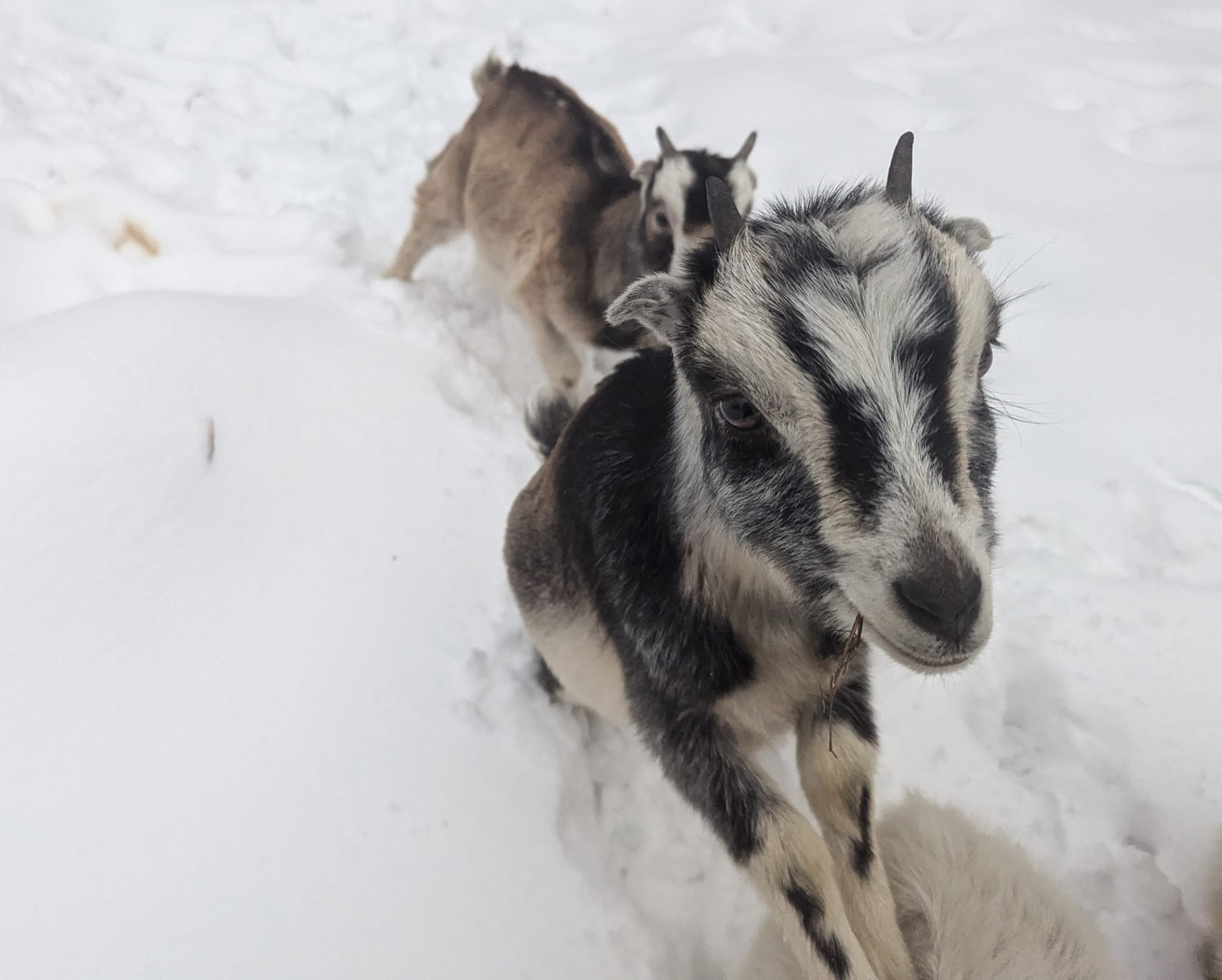
But then, more and more, it was deliberate.
I spent a fair amount of my doctoral study in the history of medicine examining the social and cultural contexts of past epidemics. Consequently, I have a good sense of how and why so much of the wider world embraced a return to “normal” when mandatory testing and reporting by public health authorities was phased out and the Covid 19 pandemic was deemed “over” sometime in 2021.
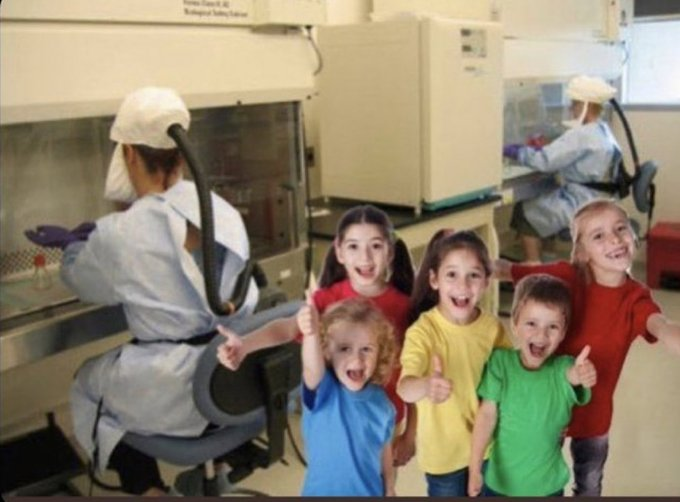
Alas, possessing a heightened medical literacy also means I know full well that it did NOT end, and we most likely have another pandemic just around the corner. (I’ll save my thoughts on this for another post).
Suffice it to say, this awareness puts me in a profoundly uncomfortable position. Aside from my disabled and immunocompromised beloved, in the matter of whether it is a good idea to share air with other people whose infectious status is unknown, I am out of step with pretty much every single person I hold near and dear. So staying deeply immersed in the farm became the preferred course of action.
My daily social contacts are now almost exclusively with non-human intelligences: plants, animals, and the Earth herself.
And that’s how I became a farmer philosopher, absorbing everything the natural world has to teach us. So I’ve learned a whole lot about farming, but even more about the sacred in nature. To quote from the Babylon 5 episode I chanced upon back in the day that pulled me into watching the whole series, “I see now the calling of my heart is Religious.”
On the fantastic and the impossible
In a postsecular age, you don’t need to be churched in order to be religious. Donatello’s Magdalene, who sought the divine by isolating herself in the wilderness, shows us that away from the world it’s quiet enough that we can begin to detect the transpersonal, the mystery, immanent in all things.
It’s the Fantastic—that moment of uncertainty which sits on the border of belief and disbelief—and the Impossible—the very threshold of possibility—that now hold the bulk of my attention.
As my father often reminds me, learning something new is only the first half of the process; sharing your findings is what really matters.
As a result, this newly resurrected writing project now expands to include some new territory. I still have lots to say about how we imagine athleticism, about goats and chickens, and so forth. But I’d like to return the ground I first trod in the Literature of the Fantastic class I taught at Queen’s University two decades ago. I’ve had an Impossible Worlds virtual salon TBA at the Academy of the Impossible for a while now and a pending Voice in the Wilderness podcast that never got off the ground. Let’s see into what new lands this team of horses takes us.
Change is palpably in the air here in 2025.
Let us go then, you and I,
When the evening is spread out against the sky
Like a patient etherized upon a table
—T.S. Eliot, The Lovesong of J. Alfred Prufrock (1915)
